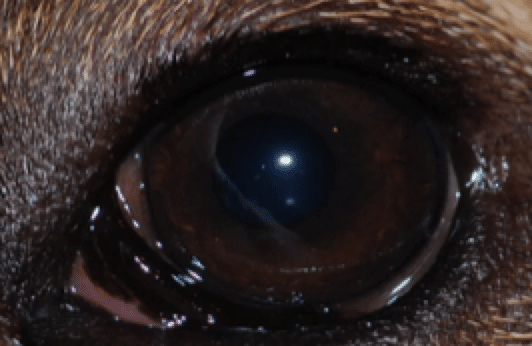What is Cherry Eye?
Within the folds of the lower eyelid, a thin membrane is present that is called the “third eyelid” or “nictitans”. Located at the base of the third eyelid is one of two tear producing glands around the eye. This gland produces 30-40% of the tears for the eye. The gland is normally hidden below the third eyelid, kept in position by a small ligament. The gland prolapses or pops out of position when this ligament weakens or ruptures. The gland then becomes quickly reddened and swollen (termed “cherry eye”). There is increased risk of permanent damage to this tear gland the longer the gland is in this abnormal position. “Cherry eyes” are commonly seen in predisposed breeds (as an inherited condition) including the Cocker Spaniel, Bulldog, Beagle, Lhasa, Shih Tzu, but can occur in other breeds and in cats as well.
How is Cherry Eye repaired?
In the past, the entire gland was surgically removed, but we now know that when this is performed, the pet runs a greater risk of developing “dry eye” (KCS or keratoconjunctivitis sicca) later in life. KCS is a serious condition that can be difficult to treat, require life long medication and can threaten vision. The preferred method of treating a cherry eye is to surgically reposition the gland into its normal location. The success rate of this procedure is 90-95%. In 5-10% of cases, the gland will reprolapse and need a second surgery.
How will my pet look after surgery?
This procedure requires general anesthesia, but your pet will go home the same day. After surgery, the third eyelid may appear reddened and swollen for a few days; this is expected. You may also notice some blood-tinged discharge from the eye for the first few days.
An Elizabethan collar (e-collar) will need to be worn at all times until the surgery area has healed (1-2 weeks) to prevent your pet from rubbing out the sutures that are holding the third eyelid gland in place.
IMPORTANT!
It is important to know that despite surgery, dry eye (KCS) may develop later in life if damage occurs to all of the lacrimal glands. This damage is most commonly associated with an immune system dysfunction and its occurrence cannot be predicted or prevented.



